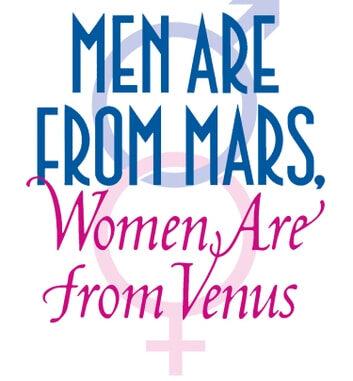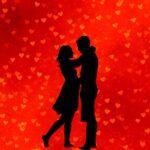
Summary
 Men Are from Mars, Women Are from Venus” by John Gray is a seminal work that delves deep into the intrinsic differences between men and women, especially in the context of romantic relationships. Gray employs the metaphor of men being from Mars and women being from Venus to vividly illustrate the fundamental differences in communication styles, emotional responses, and stress reactions between the genders.
Men Are from Mars, Women Are from Venus” by John Gray is a seminal work that delves deep into the intrinsic differences between men and women, especially in the context of romantic relationships. Gray employs the metaphor of men being from Mars and women being from Venus to vividly illustrate the fundamental differences in communication styles, emotional responses, and stress reactions between the genders.
-
Different Emotional Needs:
Men and women have distinct emotional needs that often stem from their upbringing, societal expectations, and innate tendencies. Men typically value power, competency, efficiency, and achievement. For instance, a man might derive immense satisfaction from successfully completing a challenging project at work, feeling a sense of accomplishment and recognition. On the other hand, women prioritize love, communication, beauty, and relationships. A woman, for example, might feel most fulfilled after spending quality time with family or having a deep, meaningful conversation with a close friend.
-
Coping Mechanisms:
When faced with stress or challenges, men and women have different coping mechanisms. Men tend to withdraw into their “cave,” a metaphorical space where they can process their feelings and thoughts. Imagine a scenario where a man faces criticism at work; his instinct might be to retreat to a quiet space, like a home office or garage, to reflect on the situation. Women, conversely, are more inclined to talk about their problems. In a similar situation, a woman might call a close friend or family member to discuss her feelings, seeking validation, empathy, and understanding.
-
Communication Styles:
The way men and women communicate can often lead to misunderstandings. Men typically communicate to relay information or solve problems. For example, if a couple is discussing vacation plans, a man might focus on logistical details like flight timings, hotel bookings, and itinerary. He views conversation as a tool to reach a solution. Women, however, communicate to discover how they feel or to understand and relate better to others. In the same vacation planning scenario, a woman might express excitement about the activities they’ll do, the memories they’ll create, or her concerns about the trip. For her, the conversation is a journey of connection and emotional exploration.
-
Points System:
Gray introduces an interesting concept of a “points system” to explain how acts of love are perceived differently by each gender. Women tend to award points for acts of love, regardless of the act’s size. Every act, from making breakfast to planning a surprise date night, earns one point. Men, however, often operate under the assumption that larger acts should be worth more points. For instance, a man might believe that buying an expensive piece of jewelry for an anniversary should earn him more appreciation than smaller daily gestures.
-
Solving Problems vs. Offering Sympathy:
Men have a natural inclination to solve problems. When women share concerns or issues, men often jump into solution mode. Consider a situation where a woman is upset about a disagreement with a colleague. A man might immediately suggest ways to resolve the conflict or avoid such situations in the future. However, the woman might not be seeking a solution. Instead, she might want to express her feelings, vent her frustrations, and receive empathy and understanding.
-
Autonomy vs. Intimacy:
Men and women often have different priorities when it comes to autonomy and intimacy. Men prioritize autonomy, valuing their independence and personal space. They often fear that being too involved or attached will lead to a loss of freedom. For example, a man might resist the idea of spending every weekend with his partner, fearing it might compromise his independence. Women, on the other hand, prioritize intimacy. They value closeness, connection, and open communication. A woman might interpret a man’s desire for space as a lack of interest or commitment.
-
Handling Conflict:
Conflict resolution is another area where gender differences are evident. Men often view conflict as a challenge to their competency. They might become frustrated or defensive if they feel they’re being criticized or not appreciated. For instance, if a couple argues about household responsibilities, a man might feel his contributions are being undervalued and prefer to retreat to think things over. Women view conflict as a potential threat to the relationship. They fear that unresolved issues will create distance between them and their partner. In the same scenario, a woman might want to discuss the argument immediately, seeking resolution and reassurance.
-
Appreciation and Motivation:
Feeling appreciated is a powerful motivator for both genders, but the ways they seek appreciation differ. Men feel motivated when they feel needed and valued for their contributions. A man might take pride in being the primary breadwinner, seeking acknowledgment for his efforts to provide for the family. Women, on the other hand, feel motivated when they feel cherished and prioritized. A woman might feel valued when her partner takes the time to listen to her, plan special dates, or express gratitude for the things she does.
-
The Rubber Band Theory:
One of Gray’s notable concepts is the “Rubber Band Theory.” After periods of closeness, men might feel the need to pull away, seeking a bit of autonomy. Imagine a couple spending an entire week on a romantic getaway. After returning, the man might feel an urge to spend a day alone or with his friends. This isn’t a sign of disinterest or a diminishing of his feelings. Instead, it’s like a stretched rubber band that needs to retract a bit before it can stretch out again. After this brief period of autonomy, he’ll return to the relationship feeling more connected and engaged.
-
The Wave Theory:
For women, Gray presents the “Wave Theory.” Just as waves rise and fall, women’s self-esteem and feelings of well-being can also fluctuate. At times, a woman might feel she’s not being loved or valued enough, even if there’s no apparent reason for these feelings. During this “wave,” she might become more introspective, expressing doubts or seeking reassurance and validation. For instance, after a particularly stressful week, a woman might feel distant or disconnected from her partner, even if nothing specific has occurred to cause this feeling. It’s essential for her partner to understand this natural ebb and flow, offering support and understanding. Once the wave passes, she’ll return to feeling confident, loved, and connected.
Understanding and Adaptation:
A significant takeaway from Gray’s book is the importance of understanding these inherent differences between men and women. By recognizing and respecting these distinctions, couples can navigate potential misunderstandings and conflicts more effectively. For instance, when a man retreats to his “cave,” instead of feeling neglected or anxious, a woman can give him the space he needs, knowing he’ll return more connected. Similarly, when a woman is riding a “wave,” a man can offer support and understanding rather than feeling overwhelmed or defensive.
Building Bridges:
“Men Are from Mars, Women Are from Venus” is not about accentuating the divide between genders but about building bridges. Gray offers practical advice and strategies for couples to communicate better, meet each other’s emotional needs, and build a deeper, more fulfilling relationship. For example, men can make an effort to listen more empathetically, understanding that sometimes women are looking for validation rather than solutions. Women can recognize a man’s need for autonomy and not interpret it as a lack of commitment or love.
Conclusion:
In essence, John Gray’s “Men Are from Mars, Women Are from Venus” serves as a guidebook for understanding the opposite gender. It underscores the fact that men and women, though different in many ways, can harmoniously coexist, communicate, and connect deeply if they make the effort to understand and respect each other’s unique perspectives and needs. By doing so, they can enrich their relationships, ensuring they thrive and flourish.
Societal Changes and Perception of “Men Are from Mars, Women Are from Venus”
Over the past three decades since the publication of “Men Are from Mars, Women Are from Venus,” societal views on gender, relationships, and communication have evolved significantly. The book, which once served as a relationship guide for many, might be perceived differently by today’s younger generations due to several reasons.
Firstly, the rise of gender equality movements and the broader understanding of gender as a spectrum challenge the binary approach presented in the book. Today’s society is more accepting of non-binary, transgender, and gender-fluid identities. The book’s central premise, which hinges on inherent differences between men and women, might seem restrictive or outdated to some.
Secondly, the digital age has transformed the way relationships are formed and maintained. With the advent of social media, online dating, and instant messaging, communication dynamics have shifted. The challenges faced by couples three decades ago might differ from those faced by couples today, who navigate digital communication, online personas, and the complexities of virtual interactions.
Furthermore, modern relationships often emphasize partnership, mutual respect, and shared responsibilities. The traditional roles and expectations associated with men and women have been blurred, with many couples seeking more egalitarian relationships. In this context, some of the book’s advice might seem stereotypical or not reflective of current relationship dynamics.
Lastly, mental health and emotional well-being have taken center stage in recent years. The younger generation is more open about discussing mental health challenges, seeking therapy, and emphasizing emotional intelligence. As such, they might approach relationship challenges with a different set of tools and perspectives than those presented in the book.
In conclusion, while “Men Are from Mars, Women Are from Venus” offers valuable insights into relationship dynamics, societal changes over the past 30 years might influence its reception among younger generations. The evolving understanding of gender, the impact of digital communication, shifting relationship roles, and a heightened focus on mental health all play a role in how the book’s ideas are perceived today.
Discussion Questions
- How do societal expectations influence the emotional needs of men and women?
- Do you believe that men primarily value power and achievement, while women prioritize love and relationships? Why or why not?
- How do you personally cope with stress? Do you find that you align with Gray’s description of the “cave” or “wave” theory?
- In what ways can open communication bridge the gap between the different coping mechanisms of men and women?
- How do you perceive the “points system” in relationships? Do you think it’s an accurate representation of how men and women view acts of love?
- Can you recall a time when a man tried to solve a problem for a woman when she was merely seeking empathy? How did it play out?
- How do autonomy and intimacy play roles in modern relationships, especially with the rise of digital communication?
- Do you think the “Rubber Band Theory” applies only to men? Can women also feel the need to pull away occasionally?
- How can couples navigate the “Wave Theory” without misinterpreting it as moodiness or inconsistency?
- How do you think understanding these theories can impact the dynamics of same-sex relationships?
- In what ways can couples ensure they’re meeting each other’s emotional needs without compromising their own?
- How can partners effectively communicate their need for space or connection without causing alarm or misunderstanding?
- Do you think the ideas presented by Gray are universally applicable, or are they influenced by cultural and societal norms?
- How can couples balance the need for autonomy with the desire for intimacy in long-distance relationships?
- How do you think the rise of gender equality movements and discussions about gender fluidity impact the ideas presented in Gray’s book?
- Can the “points system” lead to keeping score in relationships, and is that healthy?
- How can couples ensure that acts of love, both big and small, are appreciated and acknowledged in their relationship?
- In what ways can understanding the opposite gender’s communication style prevent conflicts and misunderstandings?
- How can couples apply the principles from “Men Are from Mars, Women Are from Venus” to strengthen their relationship in today’s fast-paced, digital world?
- Do you believe that recognizing and respecting inherent gender differences can lead to deeper, more fulfilling relationships? Why or why not?
Discussion Questions about societal changes since publication
- Do you think the book’s central premise of inherent gender differences still holds true in today’s society?
- How do younger generations perceive traditional gender roles in relationships?
- In what ways has digital communication impacted the dynamics of modern relationships compared to those from three decades ago?
- How might the book’s advice be adapted to be more inclusive of diverse gender identities and orientations?
- How has the emphasis on mental health in recent years influenced the way younger generations approach relationship challenges?
- In what ways do modern couples navigate the balance between autonomy and intimacy in the age of constant digital connectivity?
- How do societal changes influence the perception of the “points system” and other concepts from the book?
- How might the book’s ideas be received in cultures or societies with different views on gender and relationships?
- How do modern views on gender fluidity and non-binary identities challenge the binary approach of “Men Are from Mars, Women Are from Venus”?
- How can relationship advice from three decades ago be modernized to reflect current societal values and challenges?
Vocabulary
- Seminal: Highly original and influential; groundbreaking.
The seminal work of Charles Darwin laid the foundation for modern evolutionary biology. - Intrinsic: Belonging naturally to someone or something; essential.
All humans have the intrinsic need to belong to a community. - Metaphor: A figure of speech in which a word or phrase is applied to an object or action to which it is not literally applicable.
The metaphor “life is a journey” reminds us that life is full of ups and downs. - Vividly: In a clear and detailed way.
The author vividly described the horrors of war. - Distinct: Clearly different or separate.
Each individual has their own distinct personality. - Upbringing: The way that someone is raised and educated.
Her upbringing taught her to be respectful of others. - Innate: Existing naturally in a person or thing.
All humans have an innate ability to learn languages. - Competency: The ability to do something successfully or efficiently.
The teacher assessed the students’ competency in reading and writing. - Efficiency: The ability to produce something with the least amount of waste or effort.
The new machine is much more efficient than the old one. - Fulfillment: The feeling of satisfaction that comes from achieving one’s goals or desires.
She found fulfillment in her career as a nurse. - Introspective: Examining one’s own thoughts and feelings.
He is a very introspective person, always looking for ways to improve himself. - Autonomy: The right to govern oneself or control one’s own life.
The country gained autonomy from its colonial rulers. - Egalitarian: Believing in the equality of all people.
She is an egalitarian who believes that everyone deserves equal opportunities. - Stereotypical: Based on fixed and often inaccurate generalizations.
The media often portrays Muslims in a stereotypical way. - Emotional intelligence: The ability to understand and manage one’s own emotions, as well as the emotions of others.
Emotional intelligence is an important skill for success in both personal and professional life. - Fluidity: The ability to move or flow easily.
The river flowed with great fluidity. - Myopia: Shortsightedness, both literally and figuratively.
The government’s myopic focus on the short term has led to long-term problems. - Ebb: A gradual decline.
The tide was at the ebb, revealing the muddy seabed. - Reassurance: Words or actions that are intended to make someone feel more confident or less worried.
The therapist’s reassurance helped the patient to feel better. - Harmoniously: In a way that is peaceful and without conflict.
The orchestra played harmoniously.
Views: 30






Leave a Reply